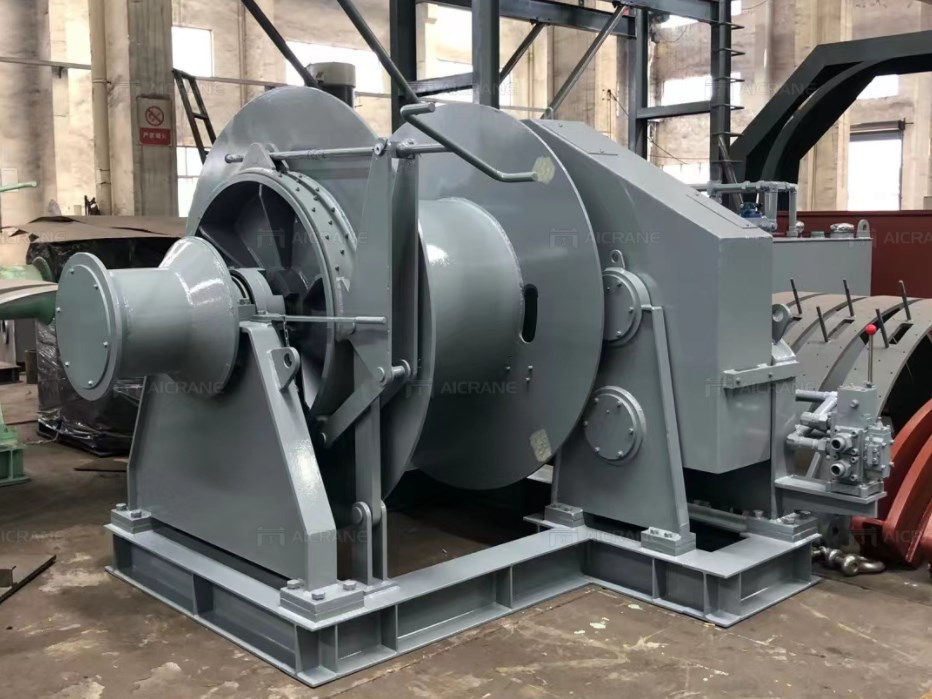Marine Hydraulic Winch Design Standards: Ensuring Safety and Reliability
- charlespsnow
- Jul 3, 2023
- 3 min read
Marine hydraulic winches are essential equipment used in a variety of marine applications, including offshore operations, shipbuilding, and salvage operations. These winches rely on hydraulic power to provide reliable and robust pulling capabilities. To ensure the safety and efficiency of hydraulic winch systems, design standards are established. In this article, we explore the significance of marine hydraulic winch design standards and their role in ensuring the safe and reliable operation of these critical marine devices.

Compliance with Classification Society Rules:
Marine hydraulic winch design standards adhere to the guidelines and regulations set forth by prominent classification societies such as the International Association of Classification Societies (IACS). These organizations provide comprehensive rules and regulations that cover various aspects of marine winch design, including structural integrity, material selection, load capacity, and safety features. Compliance with these rules ensures that the winch meets industry-recognized standards for safety, reliability, and performance.
Structural Integrity and Load Capacity:
Design standards for marine hydraulic winches emphasize structural integrity and load capacity. These standards outline the necessary criteria for the selection of materials, construction methods, and load-bearing components to ensure the winch can withstand the forces encountered during operations. Factors such as yield strength, fatigue resistance, and load testing requirements are considered to ensure the winch is capable of withstanding the specified loads while maintaining its structural integrity.
Hydraulic System Design:
The hydraulic system design of marine winches is a critical aspect of ensuring their performance and reliability. Design standards cover aspects such as the selection and sizing of hydraulic components, including pumps, motors, valves, and cylinders. Proper design ensures that the hydraulic system operates efficiently, providing the required power and control for smooth and precise winch operations. Design standards also address issues like oil filtration, cooling systems, and pressure control to maintain optimal hydraulic performance.
Safety Features and Emergency Procedures:
Marine hydraulic winch design standards emphasize the inclusion of safety features and emergency procedures to protect personnel, equipment, and the environment. These features may include emergency stop buttons, limit switches, overload protection systems, and fail-safe braking mechanisms. Design standards also specify procedures for dealing with emergency situations, such as power failure or sudden load surges. Incorporating these safety features and emergency procedures mitigates risks, prevents accidents, and protects against potential equipment damage.
Environmental Considerations:
Design standards for marine hydraulic winches take into account environmental factors to ensure compliance with environmental regulations. These standards address issues such as oil leakage prevention, containment measures, and environmentally-friendly hydraulic fluid choices. Compliance with these standards ensures that hydraulic winches operate in an environmentally responsible manner, minimizing the risk of oil spills and other environmental hazards.
Testing and Certification:
Marine hydraulic winches must undergo rigorous testing and certification procedures to ensure compliance with design standards. These tests include load testing, endurance testing, and functional testing to verify the winch's performance under various operating conditions. Certification from recognized authorities confirms that the winch meets the required design standards and demonstrates its reliability and safety.
Ongoing Maintenance and Inspections:
The design standards for marine hydraulic winches also emphasize the importance of ongoing maintenance and inspections. Regular maintenance ensures the winch remains in optimal working condition and extends its operational lifespan. Design standards provide guidelines for inspection intervals, lubrication requirements, and component replacements to prevent failures and malfunctions.
Conclusion:
Design standards for marine hydraulic winches are crucial for ensuring the safety, reliability, and performance of these essential marine devices. Compliance with these standards ensures structural integrity, proper hydraulic system design, inclusion of safety features, consideration of environmental factors, and adherence to testing and certification procedures. By adhering to these standards, operators can confidently rely on hydraulic winches for a wide range of marine applications, knowing that they meet the highest industry-recognized criteria for safety and performance.










Comments